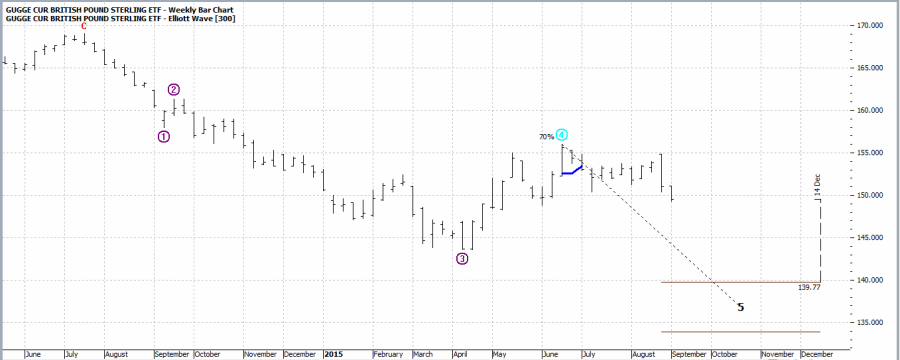The good news is that if you do this long enough you will eventually get something right once in awhile. To wit, today just a quick follow-up on a couple of things I noted a short while back.
The Fall of Biotech
In this article I highlighted the concern that if the 1999-2000 advance in biotech stocks was a “blow off top”, well then what the heck just went on in biotech in recent years? See Figure 1. Figure 1- Biotech Blow offs (Courtesy: AIQ TradingExpert)
Figure 1- Biotech Blow offs (Courtesy: AIQ TradingExpert)
Well the day after I published that piece ticker IBB topped out and subsequently plunged -28% before bouncing sharply. See Figure 2. Figure 2 – IBB plunges then bounces (Courtesy: AIQ TradingExpert)
Figure 2 – IBB plunges then bounces (Courtesy: AIQ TradingExpert)
Now if I were smart I would gloat about how I “called the top with uncanny accuracy” – and I must admit there is a part of me that really wants to (sorry, it’s just my nature). But the real lesson here is that certain “things” do repeat in the financial markets (for example, why are we all familiar with the “head-and-shoulders” chart formation? Simple, because it happens repeatedly among all of the various financial markets). So it does pay to learn from the past and to look for familiar events unfolding in real-time.
So where to from here for biotech? I have no meaningful prediction other than to expect some very wide price swings for a while. Figure 3 displays the weekly IBB Elliott Wave count in the top clip and the daily IBB Elliott Wave count in the bottom clip. The daily is suggesting sharply lower price in the near term and the weekly is suggesting sharply higher prices.  Figure 3 – Weekly and Daily Elliott Wave counts for IBB conflict (Courtesy: ProfitSource by HUBB)
Figure 3 – Weekly and Daily Elliott Wave counts for IBB conflict (Courtesy: ProfitSource by HUBB)
So your choices are:
1) Take your pick and strap yourself in, or;
2) Stand aside for now.
One other possibility is tobuy an options straddle – i.e., buy a call and a put. However, given the high price and large bid/ask spreads for options on IBB I can’t really suggest that as a good idea. Not saying it can’t make money but the reward/risk outlook is not wildly favorable.
The Fall of the Pound
In this article I highlighted the fact that the Elliott Wave counts for the British Pound (using ETF ticker FXB) generated by ProfitSource by HUBB were pointing to lower prices. Um, so far so “bad” (“Bad” in this case is roughly defined as “good”). As you can see in Figure 4, since topping out on 8/24 (head-and-shoulders top anyone?) FXB has declined 8 trading days in a row.  Figure 4 – FXB breaks hard to the downside (Courtesy: AIQ TradingExpert)
Figure 4 – FXB breaks hard to the downside (Courtesy: AIQ TradingExpert)
The option trade example I highlighted in the original article is showing a profit of 51% as I write as shown in Figure 5. Figure 5 – FXB option trade showing a profit (Courtesy www.OptionsAnalysis.com)
Figure 5 – FXB option trade showing a profit (Courtesy www.OptionsAnalysis.com)
The real question is “what to do from here”? Since this is a hypothetical example of a trade I will list the choices and you can decide for yourself what you believe is the best course of action. First, two important points:
FXB options are thinly traded and typically entail very wide bid/ask spreads. The good news is that – as this trade illustrates – it is possible to make money trading such options. The bad news is that it reduces one’s flexibility in terms of “adjusting a position”. In other words, where a trader might consider turning the original trade into some sort of spread and locking in a profit while letting the remaining position run, when bid/ask spreads are this wide it is usually not worthwhile.
The Weekly Elliott Wave count is still pointing to the potential for much lower prices-and much greater put option profits – as shown in Figure 6.
 Figure 6 – Ticker FXB; Weekly Elliott Wave count still pointing much lower (Courtesy: ProfitSource by HUBB)
Figure 6 – Ticker FXB; Weekly Elliott Wave count still pointing much lower (Courtesy: ProfitSource by HUBB)
The basic choices appear in Figure 7
Figure 7 – Possible outcomes for FXB put position (Courtesy www.OptionsAnalysis.com)
If FXB does manage to fall all the way to the upper Elliott Wave channel line ($139.77), this trade may show a profit in excess of $8,000. Of course, if FXB bounce from here, the open profit could be lost and a trader still faces a maximum loss of -$2,640.
So the a few basic choices are:
1) Sell all and take a 51% profit
2) Hold all in hopes of a really large profit
3) Sell some and let the rest ride.
There is no right or wrong answer. The key in this exercise is to consider what your own priority would be in this situation:
1) Registers a decent profit but foregoes the potential for “the big score”
2) May result in exceptional profits, but current profit may get away and trade could still turn into a loss.
3) Reduces risk but also reduces profit potential
If you want to be a better option trader, give each of these possibilities some consideration and answer the question for yourself.
Jay Kaeppel


